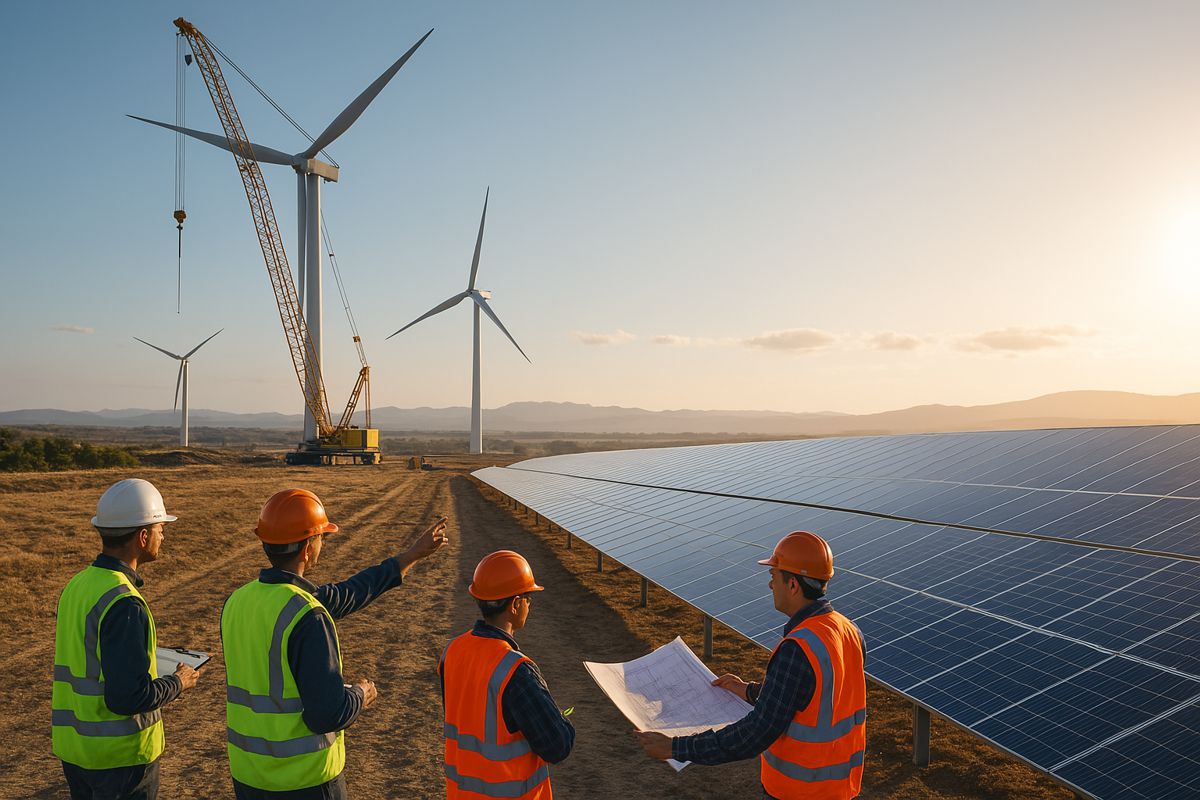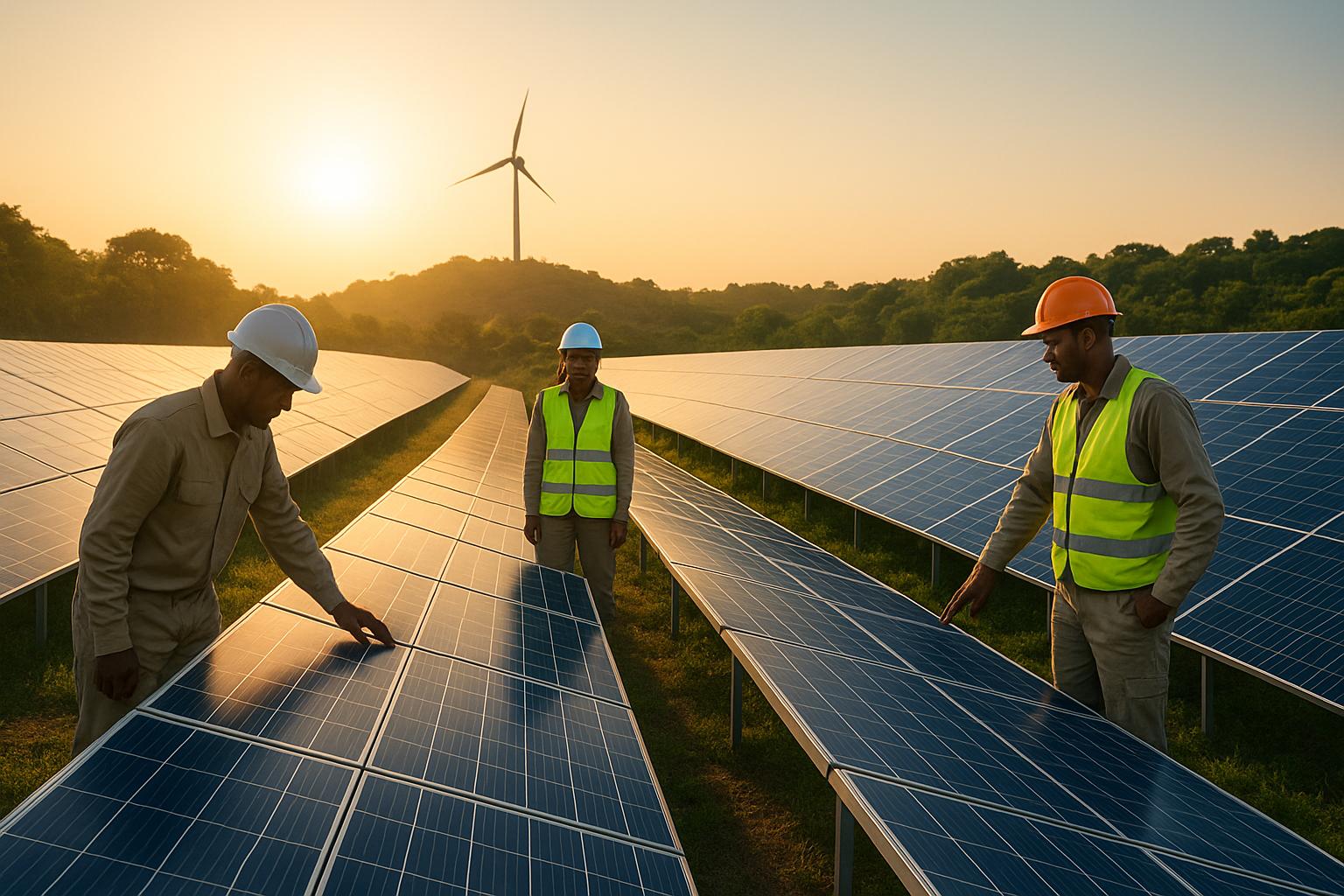
The engineering and construction world in 2025 is defined by ambition — smart cities, renewable grids, advanced transport links, and sustainable towers reshaping skylines. Yet behind every impressive new bridge or solar field lies something less visible but equally essential: development finance. It’s the quiet engine that turns blueprints into reality. Understanding how to access and use it has become a key skill for today’s engineers and project managers.
Gary Hemming, a Commercial Lending Expert at ABC Finance explains, “Development finance works because it mirrors the build — funds arrive in stages, risks are managed in stages, and value is created in stages. That alignment is what turns a viable plan into a funded project.”
Understanding Development Finance: The Foundation
Development finance is a specialised form of funding designed for long-term projects that require substantial capital and support wider economic growth. It sits somewhere between traditional loans and equity investment — offering a flexible structure that matches the complexity and duration of engineering and construction projects.
At its heart, development finance bridges the gap between concept and completion. It includes products such as project finance, property development loans, infrastructure bonds, public-private partnerships (PPPs), and grants from development finance institutions (DFIs). These are structured to accommodate extended timelines, technical risks, and large upfront costs.
In property and construction, development finance typically covers land acquisition and build costs, released in phases as progress is made. This staged approach keeps cash flow under control, ensuring capital is released only as work advances. For developers, that often means an initial advance to secure or refinance the site, followed by drawdowns approved by a quantity surveyor or monitoring surveyor based on progress reports.
The key difference between development finance and conventional lending lies in its purpose. Traditional lenders tend to prioritise creditworthiness and collateral, while development finance focuses on broader outcomes such as job creation, sustainability, and innovation. As a result, ambitious projects with solid fundamentals but phased returns are more likely to attract funding.
The Role of Development Finance in Infrastructure Development
Infrastructure remains the backbone of modern society, and development finance is what keeps it moving. The global infrastructure gap in 2025 is still enormous — trillions are needed to modernise roads, power grids, and water systems. Development finance provides the patience and flexibility required for such long-term undertakings.
Take transport, for instance. High-speed railways, airports, and smart motorways require billions in upfront investment before generating revenue. Lenders structure financing to match these realities, offering long maturities, grace periods during construction, and repayment schedules aligned with project cash flows. This makes projects that once seemed unrealistic financially viable.
Energy infrastructure is another major focus. As the world transitions towards renewables, solar farms, wind arrays, battery storage, and smart grids all demand significant capital. Development finance institutions and specialist lenders play a central role by supporting these projects through green finance frameworks and risk-sharing mechanisms. For engineers, this funding not only enables delivery but also validates the technologies behind it.
The same applies to water and sanitation projects. They may lack glamour, but they are critical to public health and environmental sustainability. Treatment plants, distribution upgrades, and wastewater systems all require sophisticated engineering and substantial investment. Development finance enables local authorities to implement these systems, driving innovation and improving community wellbeing.
How Funding Fuels Construction Innovation
The construction sector is undergoing rapid technological change. Robotics, 3D printing, artificial intelligence, and modular building techniques are revolutionising how projects are delivered. However, innovation requires funding — and that’s where development finance proves invaluable.
Many construction-technology start-ups encounter a “valley of death” between prototype and commercial scale. Development finance helps close that gap through innovation grants, pilot project funding, and risk-sharing programmes that attract conventional lenders.
Smart building technology — such as IoT sensors, automated systems, and advanced materials — often requires higher upfront investment but delivers long-term savings through efficiency and sustainability. Development finance allows these lifecycle benefits to be factored into funding models, helping new technologies move from research to reality.
Prefabrication and modular construction methods are another area of growth. They enable faster delivery, improved quality control, and less waste, but require significant capital to establish production facilities. Development finance provides the backing needed to set up these operations, transforming how modern buildings are designed and constructed.
How Engineers Can Secure Development Finance
Securing development finance requires more than engineering expertise — it calls for strategic communication and financial literacy. Engineers must be able to frame their projects in terms that resonate with funders.
The process starts with identifying the right funding partners. Multilateral banks, national DFIs, challenger banks, and specialist lenders each have distinct priorities, ranging from climate resilience and digital infrastructure to housing and commercial development. Matching the project’s objectives to the lender’s focus is crucial.
For developers or engineers who prefer guidance through this process, working with an experienced broker can save time and open doors to better terms. Firms such as ABC Finance specialise in matching projects with the right lenders — from high-street banks to specialist development finance providers — ensuring that funding aligns with both project timelines and cash flow needs.
Next comes the proposal. Technical excellence must be translated into financial language — demonstrating feasibility, risk mitigation, social and environmental impact, and a clear exit strategy. This may include detailed cost breakdowns, build timelines, and revenue forecasts that show how the project will service its debt or deliver returns.
Risk management sits at the centre of every successful funding application. Delays, cost overruns, and regulatory issues are inevitable risks that need to be clearly identified and mitigated. Projects with robust risk strategies tend to secure better terms.
Sustainability is another key consideration in 2025. Lenders expect comprehensive environmental and social impact assessments that show compliance with global standards and tangible community benefits. Strong sustainability credentials can significantly improve access to funding.
Finally, partnerships matter. Collaborating with reputable contractors, architects, and surveyors enhances credibility, while public-private partnerships combine government support with private-sector efficiency. As Gary Hemming explains, “Strong submissions do three things well: they quantify risk, they evidence demand, and they map cash flow to build milestones. Get those right and the conversation with lenders becomes a lot more productive.”
Structuring Development Finance Deals
Understanding how development finance deals are structured helps engineers negotiate more effectively. Modern projects are typically funded through multiple layers of capital, each carrying its own level of risk and return.
In UK property development, three ratios usually define the funding structure:
Day-one advance: typically 65–70% of the site’s current value.
Loan-to-cost (LTC): usually 80–90% of the total project cost.
Loan-to-GDV (gross development value): commonly 60–70% of the final value once completed.
Senior debt generally forms the foundation, covering around 60–80% of total costs and carrying lower interest due to its secured position. Mezzanine or subordinated finance bridges the gap between senior debt and equity, offering higher potential returns for higher risk. At the top sits equity — the riskiest capital but with the greatest reward.
Some lenders blend these components, using concessional terms or risk-sharing features to attract private investors. The key principles, however, remain cost, value, and exit.
Example: A developer buys a site for £1,000,000 and plans to build 12 three-bedroom homes. The build costs total £1,800,000, and the expected sales value (GDV) is £4,600,000. A lender funds 70% of the purchase (£700,000) and 100% of the build (£1,800,000), provided total borrowing stays under 90% of total costs. The resulting £2,500,000 facility represents 54.3% of GDV — comfortably within typical lending parameters.
Beyond interest rates (usually 6.5–9% for mainstream cases), borrowers should factor in arrangement fees, valuation and QS fees, legal costs, and any exit or non-utilisation fees. The lowest rate isn’t always the cheapest overall, so running a full cost comparison is vital.
As Gary Hemming advises, “Price the entire facility, not just the rate. On two near-identical cases last quarter, the lower-rate option turned out more expensive once exit and non-utilisation fees were added in.”
How Development Finance Will Continue Evolving
Development finance is continuing to evolve in step with technology and sustainability. Digital infrastructure — from data centres and 5G networks to smart-city platforms — now ranks alongside traditional infrastructure in importance. Funders increasingly view it as critical to national competitiveness.
Climate resilience is another rising priority. As extreme weather events become more frequent, lenders expect engineering projects to include built-in resilience measures. The best projects treat climate adaptation not as a regulatory requirement but as a long-term value driver.
Circular-economy principles are also reshaping the industry. Projects that minimise waste, reuse materials, and lower embodied carbon are more likely to access dedicated green finance options and favourable lending terms.
Ultimately, development finance has moved from niche to necessity. It underpins everything from housing and commercial property to large-scale infrastructure. For today’s engineers, financial literacy is no longer optional — it’s part of the job.
The most successful professionals in 2025 will be those who combine technical expertise with a deep understanding of finance. As Gary Hemming puts it, “Development finance isn’t just about building projects — it’s about building possibilities. When engineers understand funding, they can take on projects that truly transform communities.”




